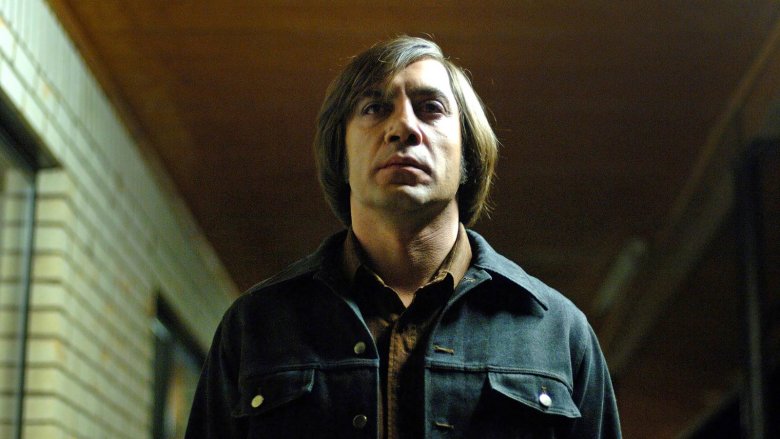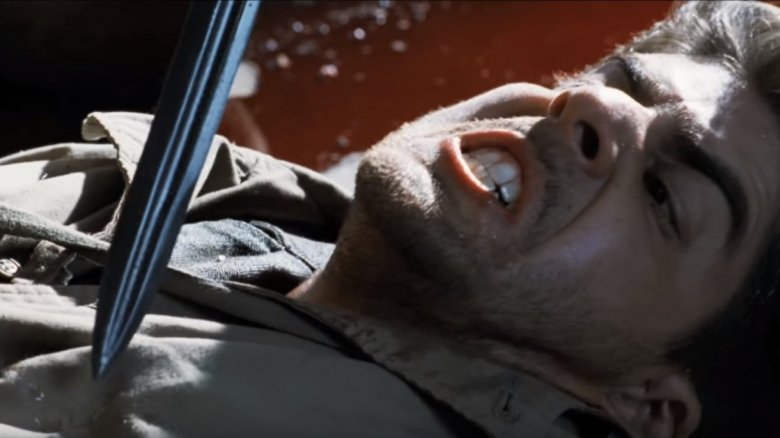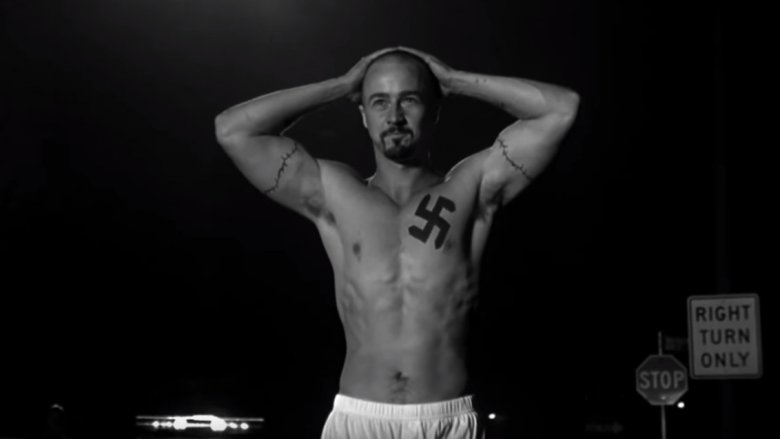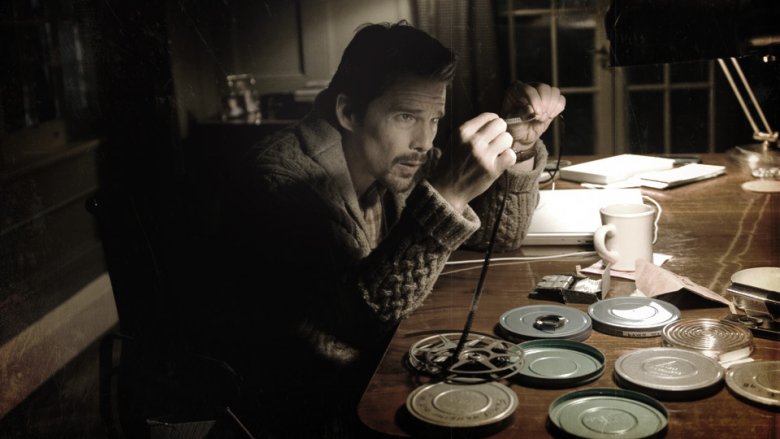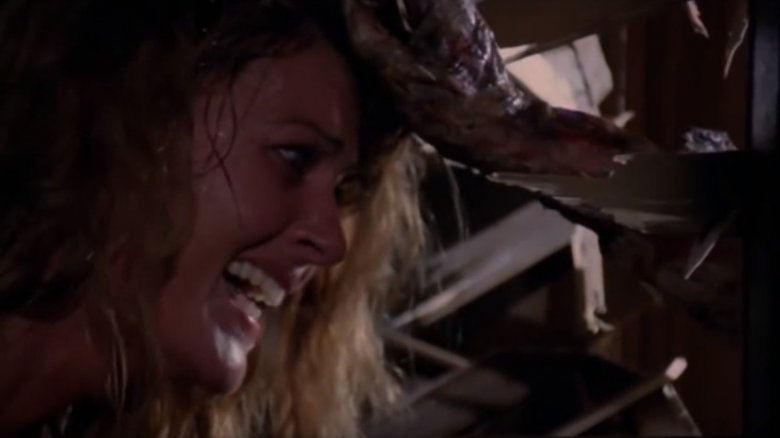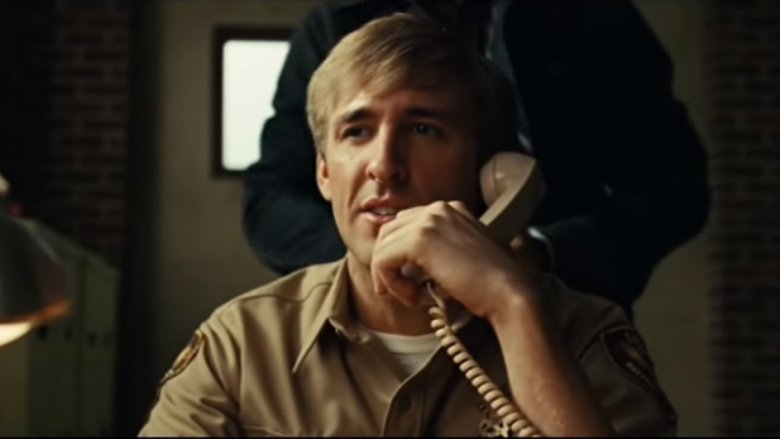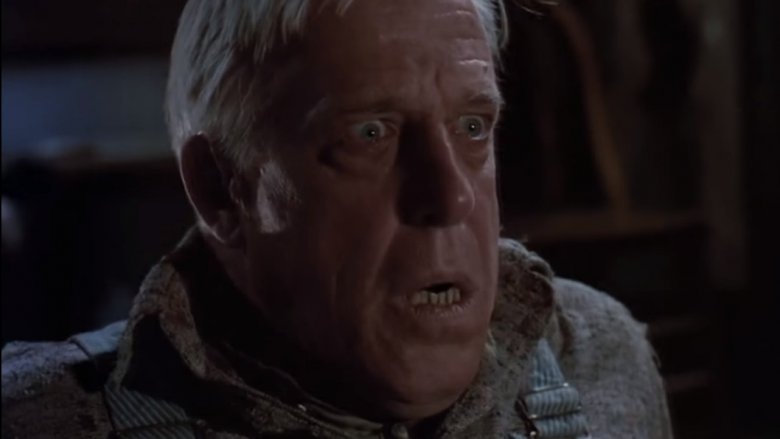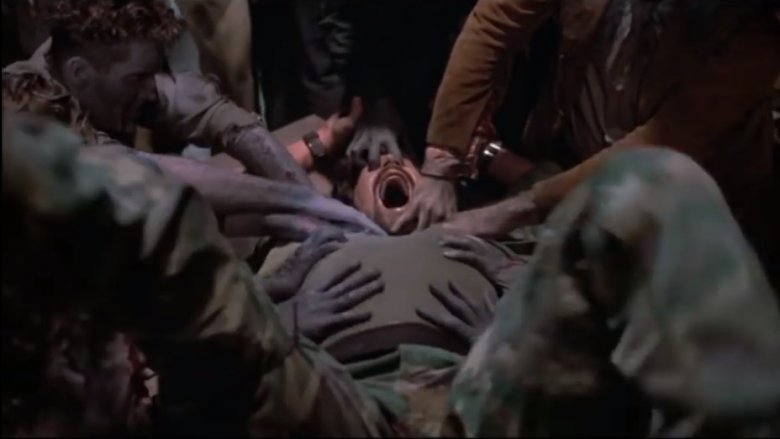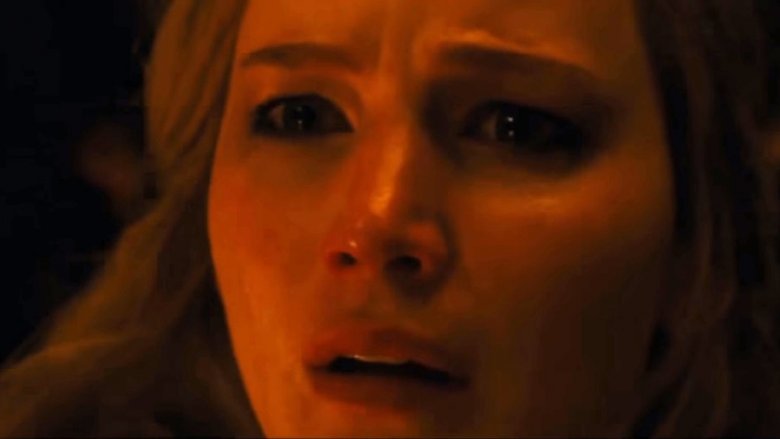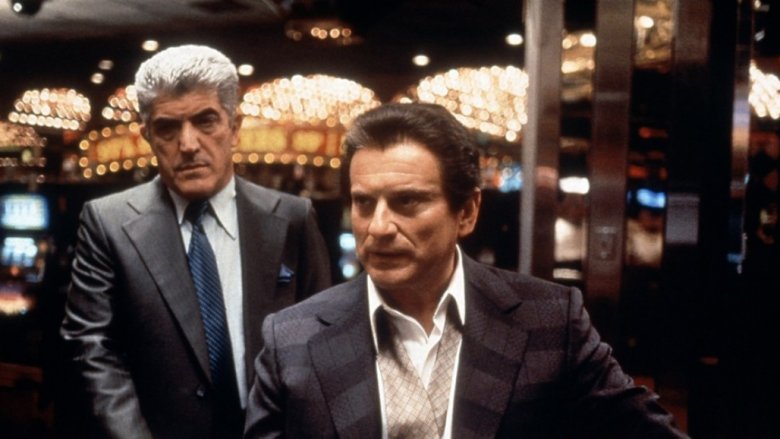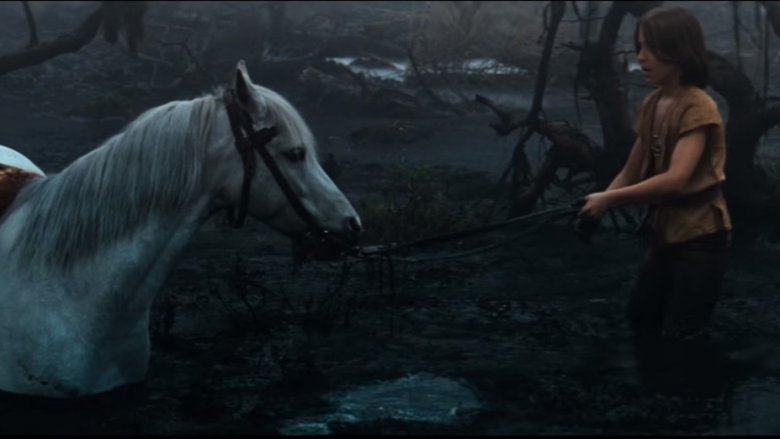The Most Uncomfortable Death Scenes In Movies
Even if you live and breathe movies, watch them every day, and think you've seen every possible scenario a filmmaker can throw at you, some things are just going to make you squirm. A great death scene, whether it's because of the emotional context or because of some truly disturbing gore, can do this in a heartbeat. One minute you're comfortably watching a movie, completely aware that you're seeing something that's make believe, and then death hits you. It might be the performance, it might be the camerawork, it might be the makeup. It might even be that it reminds you of something in your own life. Whatever the case, that death scene is going to stick in your head when you turn out the lights that night — and possibly for the rest of your life. Incredibly uncomfortable death scenes are legion in cinema history if you know where to look, but here are ten of the most unforgettable.
WARNING: Spoilers (and violence) ahead!
Saving Private Ryan (1998)
From its breathtaking opening minutes on Omaha Beach to its devastating final battle, Saving Private Ryan is relentless in its portrayal of war. Director Steven Spielberg (who won his second Oscar for the film) uses ferocious handheld camerawork to depict not just the chaos and carnage of World War II battles, but the fear, uncertainty, and broken humanity of it all. As a result, it might be hard for some viewers to pick a single death scene that's hardest to witness. They're all difficult, but one of the most bloodless is perhaps the most horrifying: Pvt. Mellish (Adam Goldberg), locked in hand-to-hand combat with a German soldier until the German gets the upper hand. Just moments away from having his own bayonet driven into his chest, Mellish starts pleading for his own life until the blade plunges in. That Cpl. Upham (Jeremy Davies) is just feet away, unable to intervene because the horrors of war have simply broken him, makes it all the more unnerving.
American History X (1998)
Nothing about American History X is comfortable, and that's exactly the way it's meant to be. Tony Kaye's searing portrait of a family's attachment to — and ultimate struggle against — their racist hate is never easy to watch, but so compelling that it's also impossible to look away. If anyone is going to hide their face during this powerful film, though, odds are there's one particular moment they're waiting for: When Derek (Edward Norton) forces a young black man to put his mouth around a curb and then stomps his head in. The curb stomp is brief and one of numerous brutal moments in the film, and the moment of impact is shot from far enough away that most of the gore is only implied. Your brain puts it together, though, and if you force yourself to confront the moment, it's almost guaranteed to linger viscerally in your memory for weeks after you see the film.
Sinister (2012)
In an era of found footage horror films, Sinister is a film that's actually about finding footage. That doesn't make it unique in its genre by any means, but there's something about tweaking the formula just so in the era of Paranormal Activity that makes key moments in Scott Derrickson's film really hit home. Each of the "home movies" Ellison (Ethan Hawke) watches throughout the film is disturbing in its own way, and they're all united by their grainy Super 8 aesthetic and the sense of voyeurism that builds to slaughter, which itself calls to mind classics like Black Christmas and Halloween. The lawnmower sequence, though, has that extra little ingredient of shock. It's devoted so much to the buildup, to following the mower as it rolls toward its destination, that you almost forget you're about to see something horrible. The abruptness of it, and the lack of gratuitousness in the payoff, work together to create squirm-worthy horror in your head.
Zombi 2 (1979)
Director Lucio "The Godfather of Gore" Fulci is among the most inventive death scene orchestrators in the history of horror cinema, to the point that many of his fans watch his films not be repulsed by the gruesome moments, but to see the dark art at work in their assembly. Fulci films are often so over the top, and so devoted to getting creative with their bloodiest moments, that you forget you're watching a human death scene, and instead it becomes a kind of dark ballet of good old-fashioned practical effects, camerawork, and acting. In other words, a Fulci scene that makes you really feel that it's real is especially effective, and Zombi 2 has one of the most infamous.
If you're watching a zombie film you expect a good many of the deaths to come from human vs. human conflict or from flesh-devouring hordes (more on that later), but to kill off Paola (Olga Karlatos), Fulci has a zombie improvise a little bit and impale her face on a shattered wooden door. The shot of her eye getting closer and closer to that splinter is incredibly effective, in part because so much of horror cinema teaches you to believe that you won't actually see the moment of impact. Surely it will only be implied. Surely the camera will cut away. When you do see it, it's unforgettable.
No Country for Old Men (2007)
Anton Chigurh (Javier Bardem), the relentless assassin at the heart of Joel and Ethan Coen's adaptation of Cormac McCarthy's novel, is one of the most memorable film villains of the 21st century so far. He ensures this through a series of cold, measured and almost preternatural moves throughout the film, giving the viewer the impression that he's more force of nature than man. That begins with his very first act, strangling a sheriff's deputy with his own handcuffs on the floor of the sheriff's station. It unfolds in near silence save for the sounds of a struggle and the squeal of the deputy's boots as he kicks black lines into the floor. What really drives it into purely chilling territory, though, is Chigurh's eyes, staring wildly at the ceiling or wherever the struggle happens to turn his head. He's less focused on achieving a task as he is feeling the life leave the deputy. It's a rare moment in a film full of dispassionate, businesslike actions from the hitman, but it stays with you until well after the credits roll.
Pet Sematary (1989)
Pet Sematary, both in book and film form, has the benefit of centering an inherently horrifying concept from the beginning: The loss of a child. The fear of it hangs over the Creed family until they finally lose Gage (Miko Hughes), and then when Louis (Dale Midkiff) tries to remedy things and resurrect his lost boy, it only gets worse when it becomes clear that what came back is definitely not Gage. As an audience, we've seen this building for a while, but witnessing Gage's violent post-resurrection slaughter of Jud (Fred Gwynne) isn't softened by that knowledge. Seeing the once-angelic little boy crawl out from under the bed and slash his kindly neighbor's face is bad enough, but then Gage bends down and buries his teeth in the old man's throat, cementing this scene's place as one that keeps playing in your head even when you close your eyes. Any single element — killer child, undead child, or transformed child — would have been horrific on its own. Pet Sematary brought us all three.
Day of the Dead (1985)
There's an escalation to George A. Romero's original Dead trilogy (later expanded to include further sequels) that's perhaps hard to notice if you're not watching them back-to-back-to-back. Some of it's due to the increased sophistication of the films' makeup effects, but some of it is Romero depicting an increasingly devolving society as it retreats further and further from the undead hordes surrounding it. This reaches its apex in the climactic moments of Day of the Dead, when the bunker holding the main characters is absolutely overrun by hungry zombies. This time around, Romero not only captures the intense claustrophobia of the cement hallways and the undead closing in on his characters, but he also shows us our clearest view yet of his monsters quite literally ripping his characters to pieces. This is never easy to watch, even for the truly awful characters, but it hits peak cover-your-eyes horror when Private Torrez (Taso Stavrakis) dies. Pinned down by the undead, the private gets his head ripped off right before our eyes, and if that's not bad enough, Romero adds an absolutely stomach-churning sound effect as the man's vocal cords are stretched and then snapped.
mother! (2017)
Darren Aronofsky's films, from Pi to Black Swan to mother!, are often designed to produce maximum discomfort. There's a thread of tension running through each of them, spurred on by often Oscar-worthy performances, that tightens and releases at an often frantic pace, but it's often about more than just ratcheting up an audience's heart rate. The tension is accompanied by the sense that the entire status quo of the film could be upended at any moment. This feeling is maximized in mother!, as we follow the title character (Jennifer Lawrence) through a home that she rapidly and inexplicably loses control of. The entire film is engineered to overwhelm both Lawrence and the viewer to the point that it feels more like a disturbing dream than a story, and this reaches its peak when the Mother's newborn baby is ripped apart. In the moment when Mother and the audience realize what's happened, all sense of the film's metaphorical explorations and stylistic concerns leaves you for a moment, and you're just left to squirm in the shock of what just happened.
Casino (1995)
Martin Scorsese has made a career out of (among other things) exceptionally stylized violence, from the "Layla" montage in Goodfellas to that striking tracking shot at the end of the carnage in Taxi Driver. He's an artist who can take the darkest moments of human violence — usually without any supernatural or science fictional artifice — and transform them into something strangely beautiful. He can also turn that instinct off, though, and just transport you into a realm of pure, unvarnished brutality. The death of Nicky (Joe Pesci) and his brother Dominick (Philip Suriano) in Casino fits easily into the latter category. There is nothing glamorous are stylish or cinematically inventive about this death scene. There's only blood, profanity, and pure hatred and fear being thrown around as Nicky and Dominick are battered with baseball bats and buried alive. It's an important reminder from Scorsese that even in slick gangster films, death is still death.
The NeverEnding Story (1984)
Movie moments that make an impact on you in childhood stick in your brain with a permanence that the cinematic experiences you have as an adult often can't approach. The first time a movie scared you, made you laugh until you couldn't breathe, or even made you cry just stays in your head. Even if you go back to those same films as an adult and find them lacking something, that emotional devastation is often still there, and that's particularly true of death scenes. There are a number of unnerving death sequences in films for children (Bambi's mother, the Wicked Witch of the West, Mufasa, etc.), but Artax's drowning in the Swamp of Sadness in The NeverEnding Story is a particularly hard one to watch. It's not animated. It's not a CGI character, and it doesn't ever seem like a puppet. As an adult watching it, you can sort of see how it was pulled off, but as a kid — even though the film fades to black for the final moments of the horse's life — you feel like what you're watching is very, very real.
